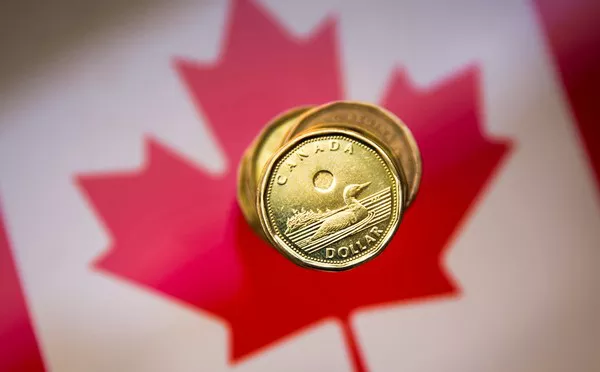The Canadian dollar, denoted by the symbol “CAD” and the abbreviation “C$”, stands as the official currency of Canada, circulating as both coins and banknotes. As a nation known for its rich cultural diversity, natural landscapes, and technological advancements, Canada’s currency reflects a blend of tradition, innovation, and symbolic representations. In this article, we will delve into the materials and design of Canadian dollars, exploring the composition of both coins and banknotes, as well as the symbolic elements that resonate with the country’s heritage and values.
Canadian Dollar Coins: Material Composition and Design
Canadian dollar coins, commonly referred to as “Loonies” (for the one-dollar coin) and “Toonies” (for the two-dollar coin), are crafted from distinctive materials and imbued with meaningful designs that showcase Canadian identity and heritage. The materials used in the production of Canadian dollar coins contribute to their durability, aesthetic appeal, and tactile experience for users.
1. One-Dollar Coin (Loonie):
The one-dollar Canadian coin, known colloquially as the “Loonie,” is composed of a durable and cost-effective material blend. Its outer ring, which features a series of milled edges for enhanced texture and grip, is made of nickel-plated steel. The inner core, housed within the outer ring, consists of a unique alloy known as “bronze-plated nickel,” adding to the coin’s distinct appearance and resilience.
The iconic design of the Canadian one-dollar coin is marked by its portrayal of the common loon—a species of bird that is revered for its association with Canada’s natural habitats and ecosystems. The image of a loon in its natural environment adorns the reverse side of the coin, serving as a symbolic representation of Canada’s wildlife and environmental diversity. This design element not only pays homage to the country’s natural heritage but also reflects Canada’s commitment to environmental conservation and biodiversity.
2. Two-Dollar Coin (Toonie):
The two-dollar Canadian coin, affectionately known as the “Toonie,” comprises a bimetallic composition that incorporates two distinct metals, each serving a specific functional and aesthetic purpose. The outer ring of the Toonie is crafted from an aluminum-bronze alloy, which lends the coin its distinct golden hue and corrosion-resistant properties. The inner core, encased within the outer ring, consists of a durable and visually striking nickel alloy.
In addition to its bimetallic construction, the design of the Canadian two-dollar coin features a captivating artistic rendition of Canada’s natural landscape. An image of a polar bear, an iconic symbol of Canada’s northern wilderness, graces the reverse side of the coin. The polar bear motif not only celebrates Canada’s unique wildlife but also pays tribute to the country’s northern heritage, shedding light on the significance of Canada’s Arctic ecosystem and indigenous cultures.
The incorporation of symbolic motifs and durable materials in the composition of Canadian dollar coins underscores Canada’s commitment to celebrating its natural heritage, fostering national pride, and ensuring the longevity of its currency for everyday transactions.
Canadian Dollar Banknotes: Material Composition and Design
Canadian dollar banknotes represent another facet of the country’s currency system, embodying a fusion of advanced security features, artistic expressions, and historical narratives. The banknotes are crafted from a durable substrate and are adorned with intricate designs and visual elements that reflect Canada’s diverse culture, innovative spirit, and notable achievements.
1. Five-Dollar Banknote:
The Canadian five-dollar banknote, part of Canada’s polymer series of banknotes, is constructed from a polymer substrate—specifically, a unique type of biaxially oriented polypropylene (BOPP). This innovative material offers durability, resistance to tearing, and advanced security features, making the banknotes more resilient and secure compared to traditional paper-based currency.
The design of the Canadian five-dollar banknote incorporates symbolic and commemorative elements, including representations of Canada’s space exploration achievements. One notable feature is the depiction of the Canadarm2 and Dextre, flagship components of the International Space Station, which pay homage to Canada’s contributions to space technology and its partnership in international space endeavors. Additionally, the banknote showcases images of Canadian astronaut Chris Hadfield, underscoring Canada’s legacy of space exploration and scientific innovation.
2. Ten-Dollar Banknote:
The Canadian ten-dollar banknote continues the tradition of the polymer series, utilizing the durable and advanced polymer substrate to enhance longevity and security. This denomination features striking design elements that celebrate the accomplishments and contributions of Viola Desmond, an influential figure in Canadian civil rights and social justice. The banknote’s design highlights the theme of human rights and inclusivity, underscoring Canada’s dedication to diversity, equality, and progressive values.
3. Twenty-Dollar Banknote:
The Canadian twenty-dollar banknote, similarly fashioned from the polymer substrate, embraces a captivating visual narrative that pays tribute to Canada’s dynamic and evolving social and cultural landscapes. The banknote features representations of the Canadian National Vimy Memorial, a significant historical monument commemorating Canada’s contributions and sacrifices during World War I. This symbolic imagery reflects Canada’s historic milestones and enduring commitment to peace, remembrance, and national unity.
4. Fifty-Dollar and One-Hundred-Dollar Banknotes:
The Canadian fifty-dollar and one-hundred-dollar banknotes, part of the polymer series, underscore Canada’s dedication to integrating advanced security features, vivid artistic designs, and meaningful themes. The banknotes employ the durable polymer substrate to enhance resilience and prevent counterfeiting, while their designs showcase evocative representations of Canada’s iconic landscapes, indigenous cultures, and contributions to international development and humanitarian efforts.
The utilization of polymer substrates, intricate designs, and symbolic representations in Canadian dollar banknotes reflects Canada’s commitment to fostering secure, innovative, and culturally resonant currency that aligns with the country’s values and aspirations.
See Also: Canadian Dollar: 7 Factors That Determine the Exchange Rate
Conclusion
The composition and design of Canadian dollar coins and banknotes exemplify Canada’s devotion to celebrating its natural, cultural, and historical heritage through its currency system. By incorporating durable materials, symbolic motifs, and meaningful narratives, Canada’s currency reflects the nation’s values, traditions, and achievements, while ensuring secure and resilient means of conducting financial transactions. As Canada continues to evolve, its currency will remain a tangible representation of the country’s rich tapestry of achievements, diversity, and national pride.


